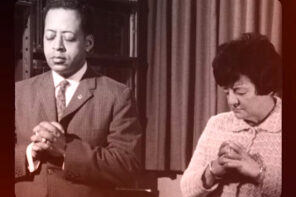It is 1 a.m., 37 degrees. Between two noisy bars, twelve people are trying to sleep in their tents, four more are drinking coffee and holding watch. We talk to drunks as they pass by; sometimes we find allegiance that may or may not be remembered in the morning, and sometimes we just bore potential attackers into docility by inviting them to explain their politics. Tent-kickers are rarely brave enough to kick a person, and “Get a job!” is easily answered by “I have two, but unemployment in North Carolina is over ten percent.” This is the Occupation of Chapel Hill. It is the morning of Halloween.
In these cold moments I remember Roger Caillois’ lecture on “The Winter Wind.” The Collège de Sociologie, a mid-century experiment in philosophical activism headed by Caillois and Georges Bataille, may have been Occupy Wall Street’s philosophical school, come too early: “A winter, perhaps a Quaternary—a glacier’s advance—is beginning for this broken-down, halfway collapsing, senile society: a spirit of examination.”
In this lecture Caillois asserts that rapid changes in the notion of “the individual” (perhaps like those facilitated by capitalist globalization and ubiquitous social media) will produce a social “climate” through which only new forms of organic solidarity will survive. Furthermore, what the College did, drawing from biblical and ethnographic data on tribal priesthoods, was to theorize those nodes of human interaction that are marked by an ambivalent mix of purity and impurity. In these they identified “the sacred.” It is a vision of the sacred characterized by immanence rather than transcendence, organic complexity rather than spiritual singularity.
I propose we begin with this ambivalence in asking what is “religious” about the Occupy Wall Street movement.
A City of Bridged Boats
At our local Occupation, I would direct the lens toward the encounters encouraged by (and necessary within) the audacious invitation to everyone harmed by the economic collapse to build homes on the commons—a politics of vagrancy: students feed small business owners, who donate supplies in turn; anarchists insulate tents with reform-minded voters; and, vitally, homeless people and the tentatively housed, already residents of our plaza, form bonds of affinity and mutual aid with “middle-class” protesters.
But simultaneously, differences in tactics, language, and aesthetics regularly cause people to wander back to their more homogenous political enclaves. From all sides, our affiliation flickers between attraction and repulsion. A politics of vagrancy seems to accelerate the apathy of strangers toward the love/hate of family. At the center, the call to near-universal solidarity may itself be sacred, drawing people in and pressing them out. Around it, our camp fractures and rejoins, like a city of bridged boats.
Recent analyses of religion in the 99% Movement tend to begin with a focus simply on pluralism, asking how diverse forms of religious transcendence—particularly in justice-minded congregations—have aligned themselves with the still-growing wave of Occupations. Muslims and Christians pray at their camps, and New Agers do yoga. When the Jewish festival of Sukkot, already a celebration of (agricultural) labor, already observed through shared meals and study in temporary shelters, rooted deeply in Zuccotti Park, the resonance between these festivals of “fragility and strength” was well reported among justice-minded Jews.
Likewise Kim Lawton recently interviewed leaders from various communities of faith on their identification with “the 99%,” finding a range of theological validations. Our own plaza was selected for its history of activism and monumental quote from Reverend Martin Luther King Jr. As always with American activism, religious groups have occasionally offered much-needed orientation to the transcendent among participants.
But the intimacy of life in a park or along a sidewalk is causing traditions to do something more than “coexist” plurally. Religions are colluding and combining.
Against a Legion of Critics
In a recent interview, Reverend Michael Ellick (whose “Golden Calf” effigy shows Wall Street’s iconic bull for the idol that it is) emphasized interfaith synergy:
That’s really what this is, assembling faith leaders so that they can get excited and now do what we’ve always wanted to do: talk about economic justice in a bigger way.
But there are also cross-pollinations that exceed interfaith politics, and to which some faithful 99%-ers may be opposed. The “Sacred Space” tent at Occupy Boston invites meditation between a Buddha statue and a picture of Christ. Occupy Phoenix built an improvised shrine where First Nations traditions interact with Catholicism and Neo-Paganism. On Zuccotti Park’s makeshift community altar, Gandhi shares space with Alex Grey, John the Baptist, and Kwan-Yin. Here, in sites of religious conjunction that must repel some participants, we can locate the College of Sociology’s “sacred,” but no more than the term applies to other passionate points of imperfect consensus within a politics of vagrancy.
I offer this as a second religious reading of the movement as a whole, alongside the demonic interpretation offered by some of its opponents. While the Family Research Council only encourages Christians to pray against what they frame as a dangerous distraction, Dr. Cindy Jacobs of the Reformation Prayer Network has prophetically asserted that a non-metaphorical “Power of Darkness” animates the movement, “a Spirit of Anarchy trying to arise in the land.”
It is unclear whether Ann Coulter’s recent claim that the Occupy participants “are following the contours of what a mob uprising is, including the embracing of their demonic aspects” has the same ontological weight. In some sense she is referring to a Christian theological notion derived from the image of “Legion” in the synoptic gospels, but this is also a case of Coulter transforming theological notions to brand her politics. Continuing to inflame beyond her book declaring even Social Gospel Christianity Godless, Demonic is effectively just a shorthand for her vision of populism, and progressive populism in particular: “The demonic is a mob, and the mob is demonic.”
But Coulter homogenizes mobs in ways that this mob refuses to homogenize itself. She imagines a sloganizing singularity of childish desire that cannot explain how ongoing internal disagreements have frequently caused local Occupations to grow. When can people drum? How do we prevent opportunistic violence? What is our relationship to the police? Shall we offer demands? And if so, whose?
In this local Occupation, like others around the nation, impassioned divisions seem to be reminding participants of the wild diversity underwriting their claims, making the complexity of a full 99% almost palpable, if never present. We often retreat in surprise and sometimes return in fascination.
Caillois, who would have identified this as a sacred ambivalence, called, too soon, for those facing the winter wind to
constitute themselves in a community and, more than that, cease to regard the values they champion as the prerogatives of rebels and insurgents, regarding them, on the contrary, as the principle values of the society they want to see established.
Whether or not that is what is happening here, there is a welcome warmth in the suggestion.




